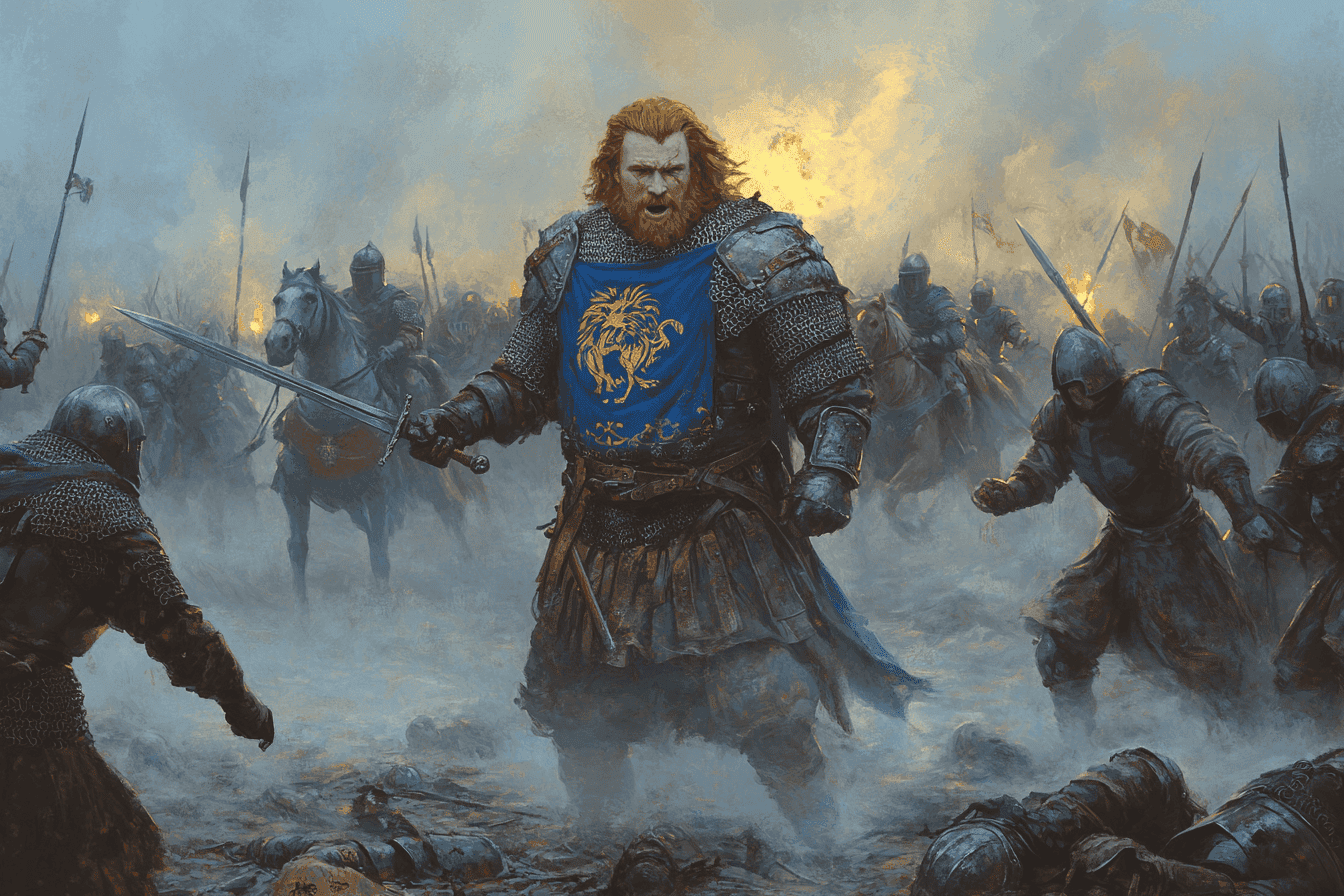
The Battle of Alnwick in 1174 marked a significant turning point in the relationship between Scotland and England. This fateful encounter took place on July 13, 1174, near the town of Alnwick in Northumberland, England, and resulted in the capture of King William I of Scotland, also known as William the Lion, by English forces loyal to King Henry II.
Background
William the Lion, born around 1142, ascended to the Scottish throne in 1165 following the death of his brother, Malcolm IV. Unlike his frail and deeply religious predecessor, William was a powerfully built, redheaded, and headstrong monarch. His reign was characterized by ambitious attempts to regain control over Northumbria, the northernmost territory of England, which he had inherited as an earldom but had been forced to surrender to King Henry II of England in 1157.
The events leading to the Battle of Alnwick were set in motion by the Great Rebellion of 1173-1174, also known as the Revolt of 1173–1174. This rebellion was primarily led by King Henry II’s sons, who sought to overthrow their father with support from Louis VII of France and William the Lion of Scotland. William saw this conflict as an opportunity to pursue his long-standing claim to the northern English shires, particularly Northumbria.
The Scottish Invasion
In 1173, William launched his first invasion of northern England, taking advantage of Henry II’s preoccupation with the rebellion of his sons. This initial incursion proved unsuccessful, with William failing to capture the partly built stone castle at Newcastle and finding Prudhoe Castle’s defenses too strong to overcome.
Undeterred by this setback, William mounted a second, more formidable invasion in 1174. This time, he assembled a larger army, reportedly numbering 80,000 men, though this figure is likely an exaggeration. The Scottish force included a contingent of Flemish mercenaries, adding to its strength and diversity.
During this campaign, William adopted a different strategy. He bypassed Newcastle and again laid siege to Prudhoe Castle, which had been further fortified since his previous attempt. After a three-day siege proved fruitless, William decided to move northward to besiege Alnwick Castle.
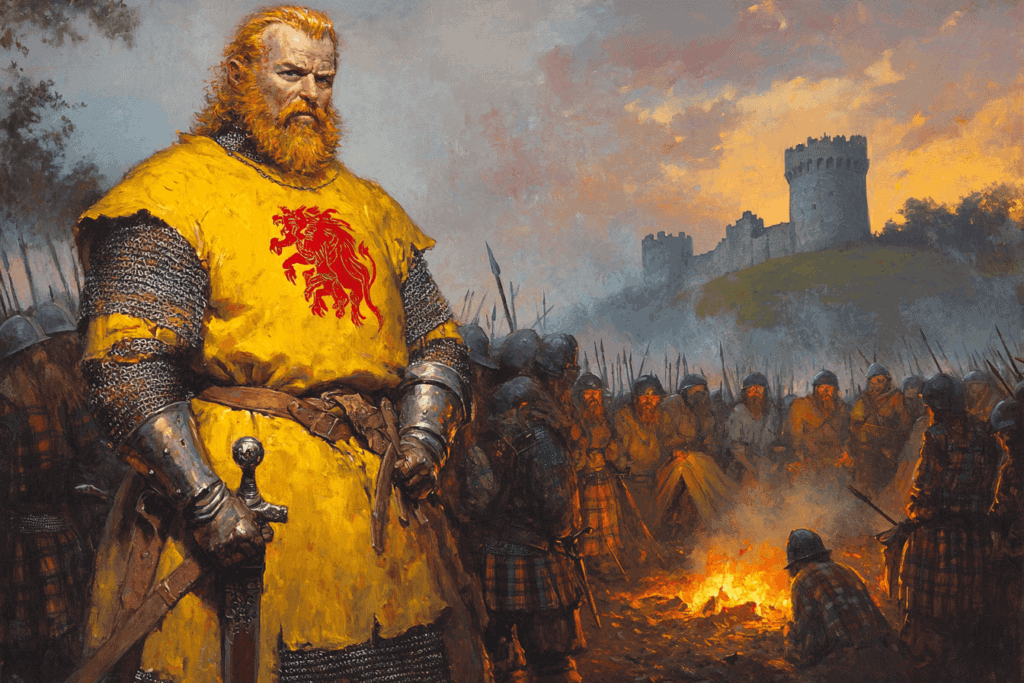
The Fatal Error
As the Scottish army approached Alnwick, William made a critical tactical error that would ultimately lead to his downfall. Instead of maintaining a concentrated force around his base at Alnwick, he allowed his army to spread out across the countryside. This decision to disperse his troops was likely motivated by a desire to ravage the coastal plain of Northumberland, possibly as an act of frustration after failing to capture several key fortifications, and so that his troops could pillage the food they needed from the local English.
On the morning of July 13, 1174, William found himself in a vulnerable position. Whilst he had brought an army of tens of thousands down to England, most of his men were now scattered across the region, leaving the Scottish king with only a small contingent of about sixty knights as his personal bodyguard.
The English Response
Meanwhile, a force of about 400 mounted knights, led by Ranulf de Glanvill, had set out from Newcastle on the night of July 11. This English cavalry unit, composed of seasoned warriors with experience fighting against the Scots, rode through the night towards Alnwick.
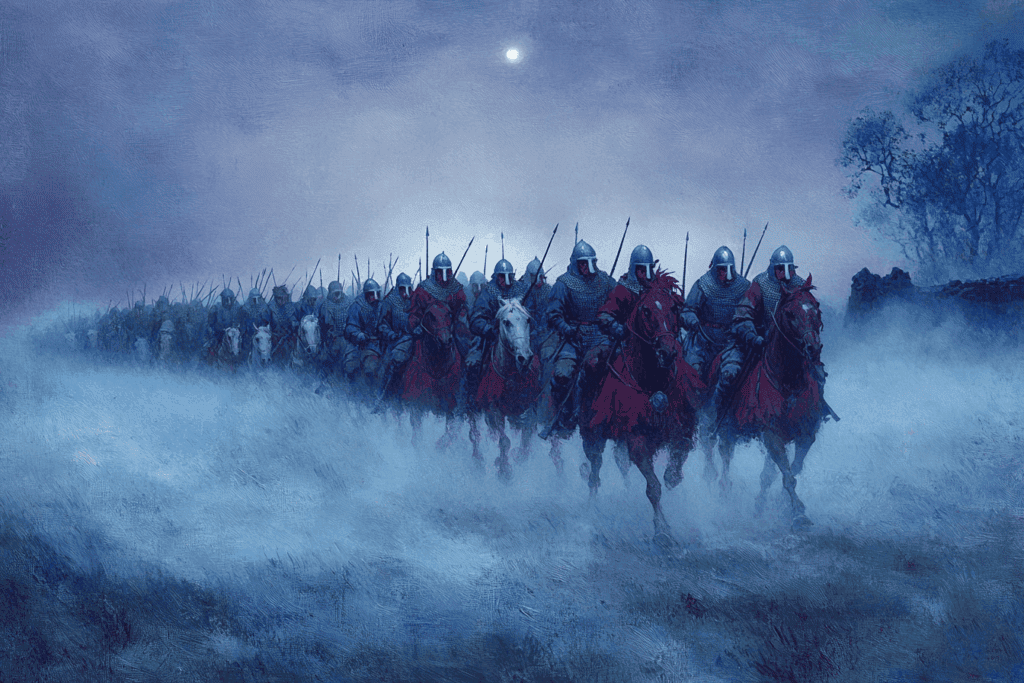
As dawn broke on July 13, the English force found themselves enveloped in a heavy fog, causing them to lose their way temporarily. However, this meteorological obstacle would soon prove to be a decisive factor in their favor.
The Battle
As the fog began to lift, Ranulf de Glanvill and his men suddenly found themselves in sight of William’s encampment just outside Alnwick Castle. The Scottish king and his small retinue were caught completely off guard by the unexpected appearance of the English force.
Upon hearing the alarm, William rushed from his tent and hurriedly prepared for battle. Despite being vastly outnumbered, the Scottish king, true to his nickname “the Lion,” chose to face the English charge head-on rather than retreat. William, demonstrating both his courage and recklessness, reportedly shouted, “Now we shall see which of us are good knights!” as he led his men into the fray.
The ensuing combat was brief but intense. The English knights, taking full advantage of their numerical superiority and the element of surprise, quickly overwhelmed the Scottish contingent. In the chaos of the clash, William’s horse was killed beneath him, leaving the king vulnerable.
Capture of the Lion
In a moment that would reshape the political landscape of Britain, William the Lion was unhorsed and captured by the English forces. Those of his followers who had not been killed in the short but fierce engagement surrendered, realizing the futility of continued resistance.
The capture of a reigning monarch on the battlefield was a rare and significant event in medieval warfare. William’s reckless bravery, while admirable, had led to a catastrophic defeat for Scotland and a personal humiliation for the king.
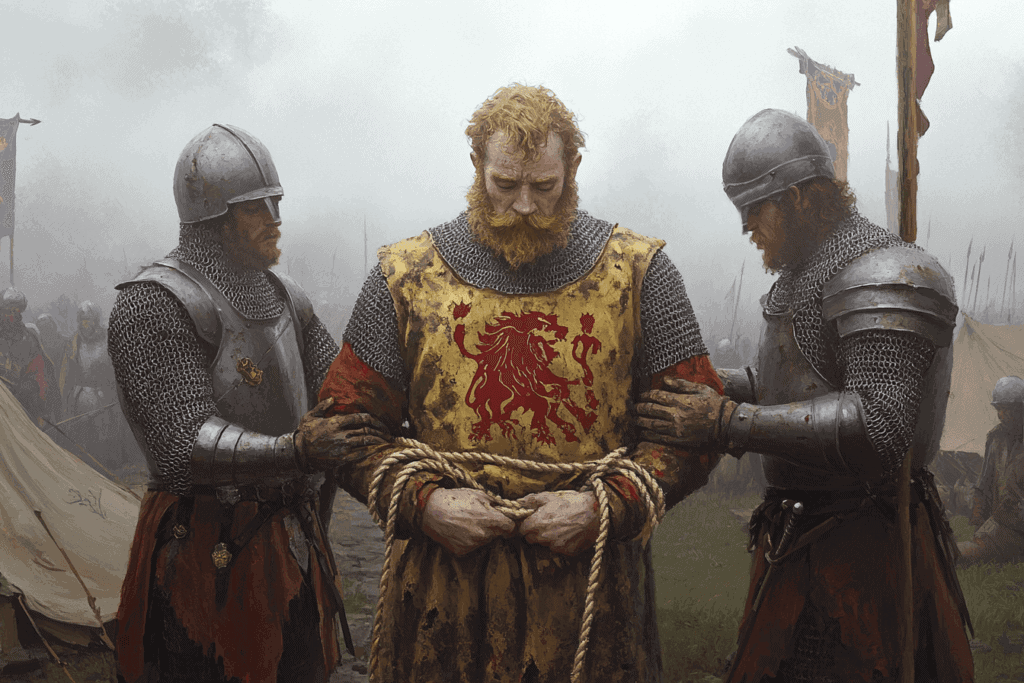
Immediate Aftermath
Following his capture, William was initially brought to Newcastle as a prisoner. However, the castle there was not considered secure enough to hold such a valuable captive. Consequently, William was transferred to Falaise in Normandy, where he would be held under the direct control of King Henry II.
The Scottish army, now leaderless and in disarray, had no choice but to abandon their campaign and retreat back to Scotland. The swift and decisive English victory at Alnwick effectively brought an end to the Great Rebellion in England.
The Treaty of Falaise
William’s capture gave Henry II significant leverage over Scotland. To secure his freedom and retain his crown, William was forced to sign the Treaty of Falaise in December 1174. This agreement had far-reaching consequences for Scotland and fundamentally altered the relationship between the Scottish and English crowns.
The terms of the Treaty of Falaise were harsh and humiliating for Scotland as William had to acknowledge Henry II as his feudal superior, effectively making Scotland a vassal state of England. Scotland was required to pay for the cost of the English army’s occupation, with key Scottish castles, including Roxburgh, Berwick, Jedburgh, Edinburgh, and Stirling, being garrisoned by English soldiers at Scottish expense. In 1175, William further cemented his subservience to the English crown by swearing fealty to Henry II at York Castle.
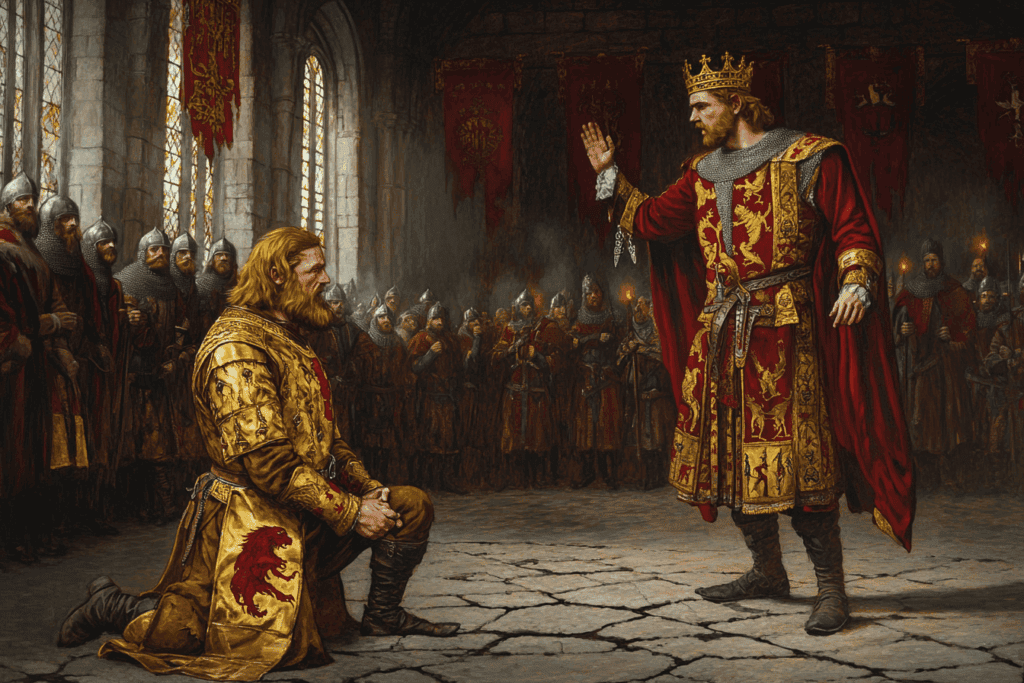
Long-term Implications
For the next 15 years, Scotland effectively lost its independence, with the English crown holding ultimate authority over Scottish affairs. Henry II’s authority extended to personal matters of the Scottish crown, including the selection of William’s bride. In 1186, William married Ermengarde de Beaumont, a great-granddaughter of King Henry I of England, at Henry II’s behest. William was even required to obtain permission from the English crown before putting down local uprisings, severely limiting his ability to maintain order within his own kingdom.
The financial cost of the treaty and the ongoing occupation of Scottish castles placed a significant strain on Scotland’s resources. This, along with the humiliation of the defeat and the harsh terms of the treaty, caused significant domestic unrest for William in Scotland, although he was able to maintain his rule.
The Road to Recovery
The situation for Scotland began to improve following the death of Henry II in 1189. His successor, Richard I, was more favorably disposed towards William and was preoccupied with preparations for the Third Crusade, and the struggle to finance such an expensive expedition.
Seizing this opportunity, William negotiated with Richard to buy back Scotland’s sovereignty. On December 5, 1189, Richard issued the Quitclaim of Canterbury, which nullified the Treaty of Falaise in its entirety. In exchange for this restoration of Scottish independence, William paid Richard 10,000 marks sterling.
The Quitclaim of Canterbury stated:
“Accordingly, William, king of the Scots, came to the king of England at Canterbury in the month of December, and did homage to him for his dignities in England, in the same manner that his brother Malcolm had held them. Richard, king of England, also restored to him the castle at Roxburgh, and the castle of Berwick, freely and quietly to be held by him; and he acquitted and released him and all his heirs from all homage and allegiance, for the kingdom of Scotland, to him and the kings of England, for ever.”
This agreement effectively ended Scotland’s period of subjugation and restored the more ambiguous relationship between the Scottish and English crowns that had existed prior to the Battle of Alnwick.
Legacy
The Battle of Alnwick and its aftermath left an indelible mark on Scottish history and the reign of William the Lion. Despite the initial humiliation and loss of independence, William’s 48-year reign (1165-1214) went on to become the second-longest in Scottish history.This was the last attempt by a Scottish king to regain lost territories in northern England. In 1237, under the Treaty of York, King Alexander II abandoned Scottish claims to Northumbria and Cumbria, and set the boundary between the two kingdoms.




